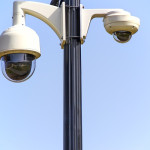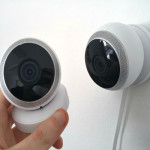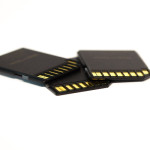The Benefits Of PTZ Cameras
Looking back, Pan Tilt Zoom (PTZ) cameras have come a long way. As technology as has advanced, PTZ cameras have decreased in size and weight while offering even better features and functions.
These high-quality PTZ cameras are ideal for monitoring large, open spaces both indoors and outdoors. Some examples include casino, malls, airports, and stadiums, where effective and efficient surveillance is necessary.
As with any security system, selecting the right PTZ camera system comes down to individual security needs. Here are some important features to consider when choosing PTZ cameras.
Video Analytics
Now nearly all PTZ systems are equipped with video analytics which provide numerous benefits:
- Directional Behaviors – notify operators or active cameras when someone or something moves against the designated flow of traffic (ex. someone trying to walk into an exit path).
- Abandoned Object Behaviors – enables video system to alert security personnel when an object (ex. backpack, box, or briefcase) is set down and left unattended.
- License Plate Recognition, Facial Detection, Perimeter Detection & related analytics.
- Tripwire Behavior – activates a camera or triggers an alarm or other operations when a person or object moves into a restricted area.
Auto-Tracking
Arguably one of the most valuable features of PTZ cameras, auto-tracking controls the PTZ actions of a camera to automatically track (keep in field of view) an object in motion. This can be triggered manually or automatically by defined rules. Once a rule is triggered, the camera automatically zooms in and tracks the defined target.
Advanced Video Compression
The H.265 compression standard enables much higher compression ratios with lower bandwidth and storage requirements than before, providing higher resolution images and deeper systems integration. However, optimized implementations of the H.265 codec are emerging, like the Smart H.265+. In comparison to the standard h.265 video compression, Smart H.265+ reduces bit rate and storage requirements by up to 30 percent.
High-Definition Video Over Coax
Legacy coax systems can be easily upgraded to HD video using existing analog infrastructure thanks to HD video over coax. With this option, there is no latency in system responsiveness and no video compression, so the images maintain a high level of detail without stretching or distortion. In addition, there is no need to install a separate cable to control PTZ since coaxial cable allows for bidirectional data transfer. Overall, this is a cost-effective way to upgrade PTZ cameras.
Infrared (IR) Illumination
With PTZ cameras, IR illumination is applied as needed. There is usually an array of three distinct areas of infrared illuminators – each with a different angle of dispersion for the IR light: wide angle, telephoto, and interim angle.
As an example, when an operator optically zooms in from wide angle to telephoto, IR illuminator LEDs will turn on and off to provide the appropriate illumination. And when the camera is in zoom mode, it adjusts the IR illumination so that the system is not flooding the entire 120-degree view. These automatic modifications illuminate the area in view, producing better video and reducing the amount of power required.
Video Quality Expectations
Zoom Factor vs. Focal Length – Keep in mind that a higher zoom factor does not always provide a better video image. The focal length of the lens will provide a better indication of what is appropriate for an application.
Plastic vs. Glass – Remember not all lower domes (the protective housing at the bottom of a PTZ camera) are the same. While most manufacturers use a plastic lower globe to protect the camera and optics, this can offer a lower degree of optical clarity. As the camera pans up toward the horizon, it begins to view through the globe in areas where it has the least uniformity (where most optical distortions can occur).
Glass lower globes (or a flat piece of glass, as provided by some companies) are more optically pure and consistent in comparison. These glass coverings enable dome systems to feature higher resolution sensors and longer optical zooms thanks to their clear and consistent nature.
Some modified lower dome designs allow for above-the-horizon viewing – ideal for those who need to monitor rough terrain or scenes on different planes of view.
Thinking about installing a PTZ system on your property? We carry a great collection of quality PTZ security cameras. Browse our stock online or call 888-203-6294 to request a site survey, free quote, or inquire about our installation services. Connect with us on Facebook, Google+, Twitter, LinkedIn, and Pinterest.
Positioning & Installation Tips For IP Cameras
IP cameras offer excellent benefits for home security, including ease of installation and advanced functions. However, if not installed or deployed properly, these benefits can be negated.
Whether you are installing your own security system, or you are having it professionally installed, be sure that the right cable is being used and that it is installed correctly.
Here are more tips for IP security camera installation:
- Be sure that UTP connected devices (ex. couplers, modular plugs and wall plates) match the Category of the cable used, and that this is done consistently throughout the installation.
- For optimum performance (by design and specification), cable runs in an IP camera system can only extend up to 295 feet.
- The bend radius of both Cat-5e and -6 cables must be limited to four times the cable diameter – the acceptable bend radius is no less than 1 inch.
- The pull tension while installing Cat-5e/-6 cannot exceed 25 pounds.
- Limit the length before stripping the sheath from a cable in a wall box so that the excess can easily be pushed back into the wall cavity.
- Do not staple Cat-5e/-6 cable. Use D rings, bridle rings, J hooks and other devices that do not risk altering the outer form or dimensions of the cable.
- Keep a 6-10 inch parallel distance between Cat-5e and -6 cables and high-voltage wires (120/240VAC).
- Strip Cat-5e/-6 cables back as little distance as necessary when attaching them to connecting devices.
- Use either the T568A or T568B connection format and stick to just one throughout the entire installation for conformity.
Aside from the proper cable, you must take the surroundings of your security camera placement into consideration. Be sure that the IP cameras you choose are suitable for the environment in which you install it.
- Be mindful of the different lighting conditions your security cameras will be subjected to when selecting cameras.
- When considering camera placement, keep in mind the field of view and any obstructions that might prevent a clear view of the area.
- Be sure there is sufficient network connectivity available in the vicinity of where your camera will be placed.
- For all outdoor cameras, especially in areas known for lightning, use surge protection.
- Assure that the PoE power supply you use is adequate for the job. Be sure to compute the power load before making a final choice.
- To assure the integrity of the camera (especially in areas prone to crime), use vandal-proof housing.
- Cat-6 UTP is always best, but Cat-5e is a cost-effective alternative, doing an adequate job of handling most video transport needs.
- Using fiber instead of metallic has its advantages. Foremost, fiber allows you to run camera signals at greater distances and with greater bandwidth than metallic cable can provide.
- Last but not least, use safe installation practices to assure that everyone goes home at the end of the day.
If you are looking for affordable prices on professional security camera installation, give us a call today 888-203-6294. You can also browse our CCTV surveillance selection online at SecurityCamExpert.com. Stay connected with us on Facebook, Google+, Twitter, LinkedIn, and Pinterest.
Common Outdoor Security Camera Issues
Outdoor security cameras act as your first line of defense against potential burglars. The presence of outdoor security cameras alone can act as a deterrent and they can provide you with evidence should anything happen. Because they are placed outdoors, these security cameras are susceptible to possible dangers which may compromise your security system. Here are a few outdoor security camera risks and how to safeguard your security equipment.
Vandalism & Theft
Unfortunately, to cover their tracks and eliminate possible evidence, thieves may resort to vandalism and theft.
In order to protect your equipment, you will want to choose vandal-proof security cameras or CCTV cameras with metal housings or covers. These not only make it harder for them to be stolen, but they also help to keep your security camera clean.
You should also consider the placement of your security cameras. Installing outdoor security cameras where they are visible yet out of reach will help to maximize their effectiveness and reduce the risk of damage.
Lighting & Thunderstorm
Though it may seem highly unlikely, there’s still a chance your security equipment may get struck by lightning, especially in areas where thunderstorms are common.
Because metal can be highly conductive, avoid mounting your cameras to a metal. Also, be sure that your CCTV or PoE security system is grounded properly. This can minimize damage by redirecting the lightning current into the earth ground.
In addition, employing lightning surge protectors prevents voltage spikes by blocking voltage that exceeds specific thresholds and instead directing the excess into the outlet’s ground line.
Should the thunderstorm result in power outage, UPS (Uninterrupted Power Supplies) units will provide reliable backup power. They will even work if you unplug all system, cable, modem and antenna connections during a thunderstorm.
Hackers
Hacking is a big concern for network IP cameras, as hackers can possibly jam the operating device or decrypt your safety code.
In these cases, you will want to boost your network security with WPA2 (Wi-Fi Protected Access II) security protocol. You should also change your passwords frequently and make your passphrase complicated.
Firmware
In addition, updating firmware regularly for your IP security cameras is key. Some may be hesitant to perform this task as it can be inconvenient, however, these updates often contain patches for recently found loopholes or vulnerabilities that may threaten your system.
Be sure to update your firmware every few months, or check the product website to ensure you are using the latest firmware version. Also, remember to read the information carefully before upgrading.
Spider Webs or Bugs
If you employ IR security cameras outdoors and under eaves, they are likely to attract nocturnal bugs and insects that are naturally drawn to lights. Unfortunately, bugs and spider webs can compromise image quality and may even trigger false alarms from motion sensor cameras.
These issues can be combated with regular cleaning and maintenance of your outdoor security cameras. Using natural insect repellents (ex. citrus, eucalyptus, lavender, peppermint) are reported as very effective in keeping spiders away. In addition, you may use spider repellents, contact sprays, aerosol sprays and web eliminators around the camera (not directly on the lens for obvious reasons). Lastly, if you reduce the motion-detection sensibility accordingly, you will reduce false alarms.
Extreme Weather Conditions
You may worry about the performance of your security cameras if you live in areas that experience extreme and inclement weather conditions (ex. freezing winters, sweltering hot summers). Luckily, security cameras come with an IP (ingress protection) rating that determines their ability to sustain harsh weather. For example, an outdoor security camera with IP rating 66 is also known as completely water-proof (can withstand solid matter and liquid, such as dust and rainwater respectively).
Reflection Of Lights
Beware of pointing your outdoor security cameras at reflective surfaces (ex. ponds of water, glass panels, car windows) as it will cause lens glare and obstruct viewing.
To avoid this, place front door and back door security cameras outside and out of reach. Also, adjust your camera field of view to shy away from potentially reflective surfaces.
Fogging, Clouding, Or Condensation
While security cameras are often assembled to be sealed-up and air-tight to prevent moisture seeping into the lens, sudden changes in temperature may cause fogging.
This issue is common in the early morning and will sometimes go away on its own. If the problem persists, you may want to consider placing a packet of silica gel inside the housing case. Also, regularly wiping the outer lens covers with a micro-fiber cloth will help protect your cameras.
How do you maintain your outdoor surveillance system? Share your tips with us on Facebook, Google+, Twitter, LinkedIn, and Pinterest.
To shop our selection of outdoor security cameras, CCTV cameras, IP surveillance systems, and more, please visit SecurityCamExpert.com. Looking for a free quote? Call 888-203-6294 today!
Surveillance System Storage
Security cameras play a major role in home security. Aside from deadbolt locks and alarms, security cameras can provide video footage of incidents and alert you as needed. Of course, the quality of the security camera and surveillance footage is important, and the proper video storage has a direct impact on this.
When it comes to video surveillance storage, there are basically two options – local and cloud. Evaluating their differences can help you narrow down your security system options.
Local Storage
Local video storage saves your footage locally – usually via microSD cards. Security cameras that offer local storage have built-in microSD slots that can typically handle anywhere from 16GB to 128GB. These cards may be included in your purchase or you may have to purchase them separately.
Once the microSD card is properly inserted in the security camera, you may then set your preferences in the accompanying mobile app for video storage. You may choose event-based recording, which only saves clips when motion or sound is detected, or continuous recording, which records everything around the clock.
When the card is full, you may continue recording (by overwriting the previous footage), or stop recording and manage footage manually. You can usually view saved clips in the app, but you may also removed the microSD card and stick it into a card reader or card adapter if you would like to save videos to your computer.
Those who are concerned about privacy often prefer this option, as you are in charge of managing your videos. In addition, your video surveillance footage is easily accessible without having to pay a monthly fee (which is common with cloud storage).
Cloud Storage
Much like smartphones store photos and other data on “the cloud,” security companies seem to be following suit with video surveillance footage. Rather than purchasing additional parts and manually managing your videos, you can opt for cloud storage.
Your event-based or continuous recordings are sent off to remote servers and you are charged a monthly fee based on the service provider and the type and amount of surveillance footage you store.
These subscription-based cloud storage services are generally more convenient than dealing with microSD cards, however, you do not have control over these remote servers. Thus, outages can cause major issues, such as delays in accessing your saved videos. And for the privacy-conscious, you might always wonder who has access to your footage.
Local Vs. Cloud
It really just comes down to your own needs and preference. Local storage gives you more control while cloud storage provides more convenience. If you really can’t decide on one or the other, there are hybrid options on the market that offer a mix of both.
Along with other factors, video surveillance storage is important when deciding on a security camera system. If you need any help choosing a security camera system, or simply want to view some cost-effective quality CCTV surveillance cameras and systems, visit SecurityCamExpert.com or call 888-203-6294. Our representatives are happy to answer questions and provide you with a free quote.
For the latest news and updates, connect with us on Facebook, Google+, Twitter, LinkedIn, and Pinterest.



